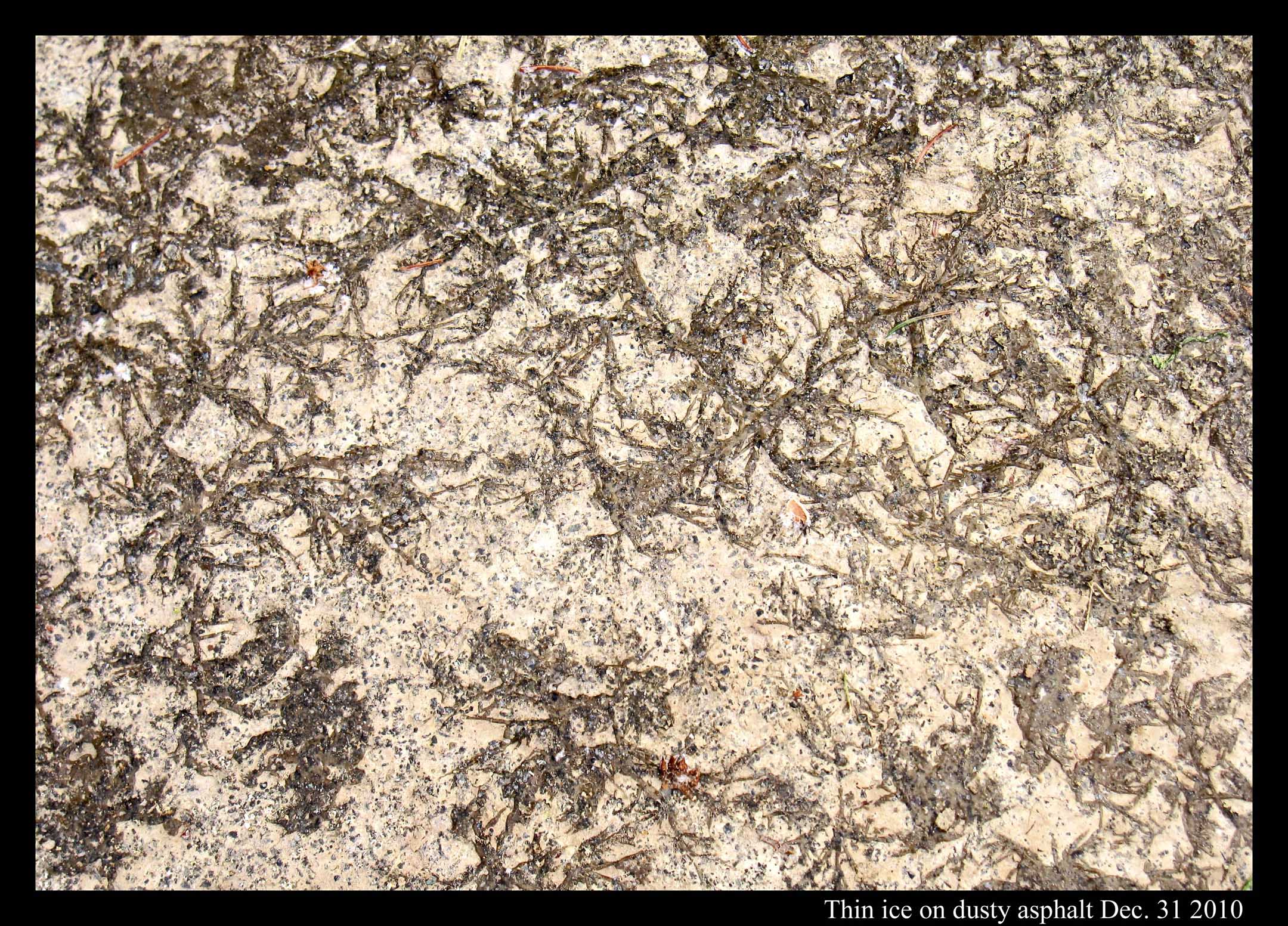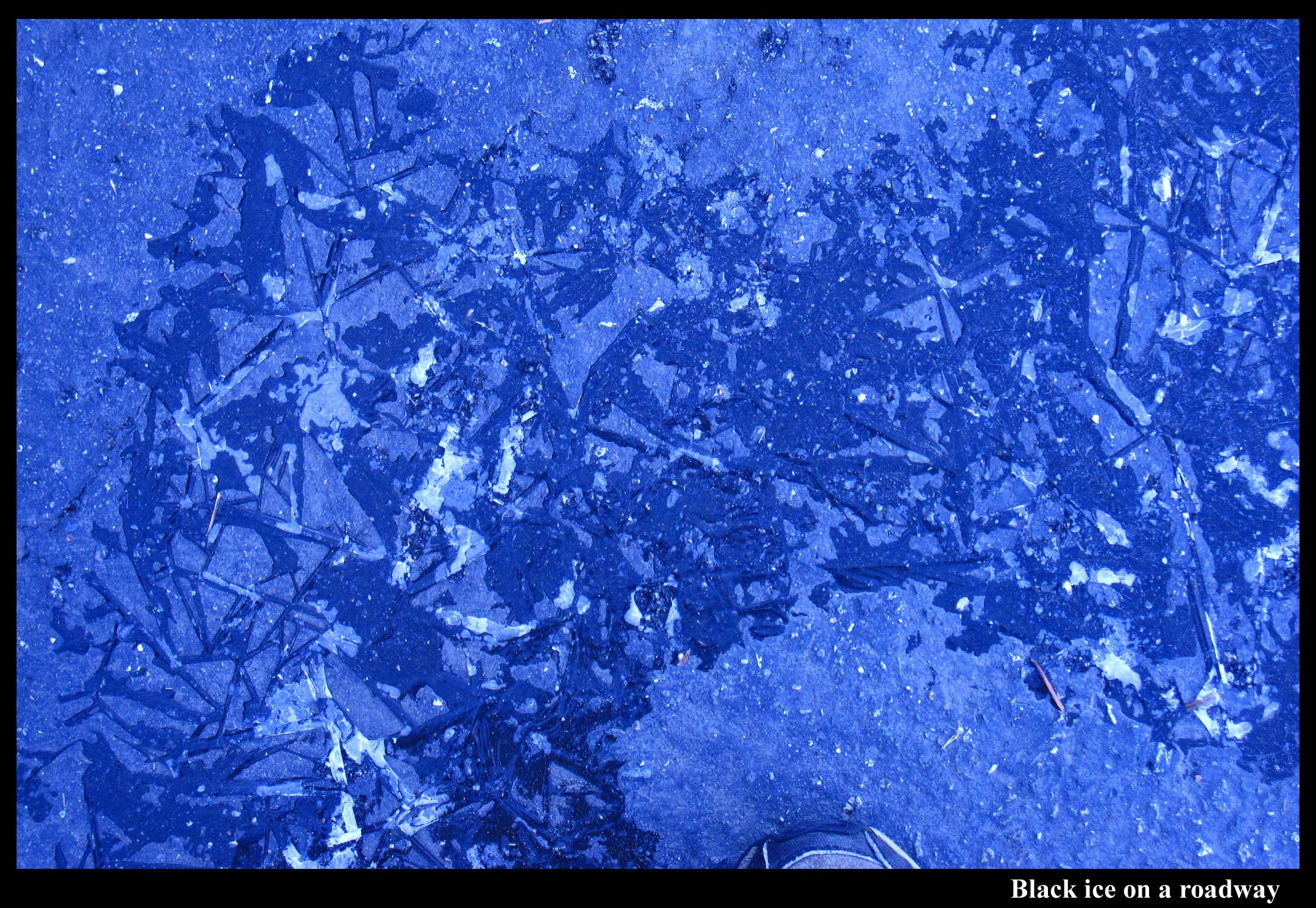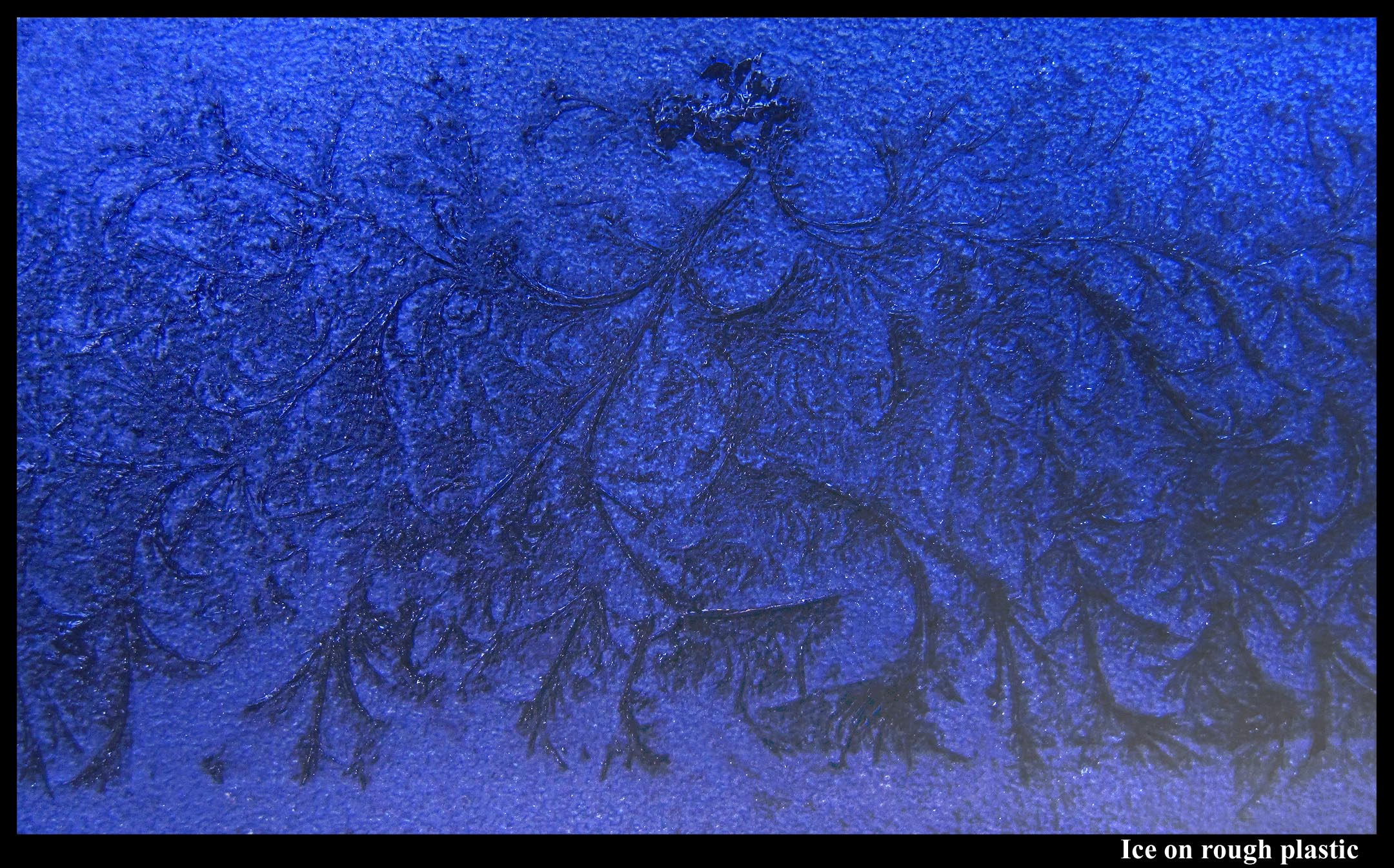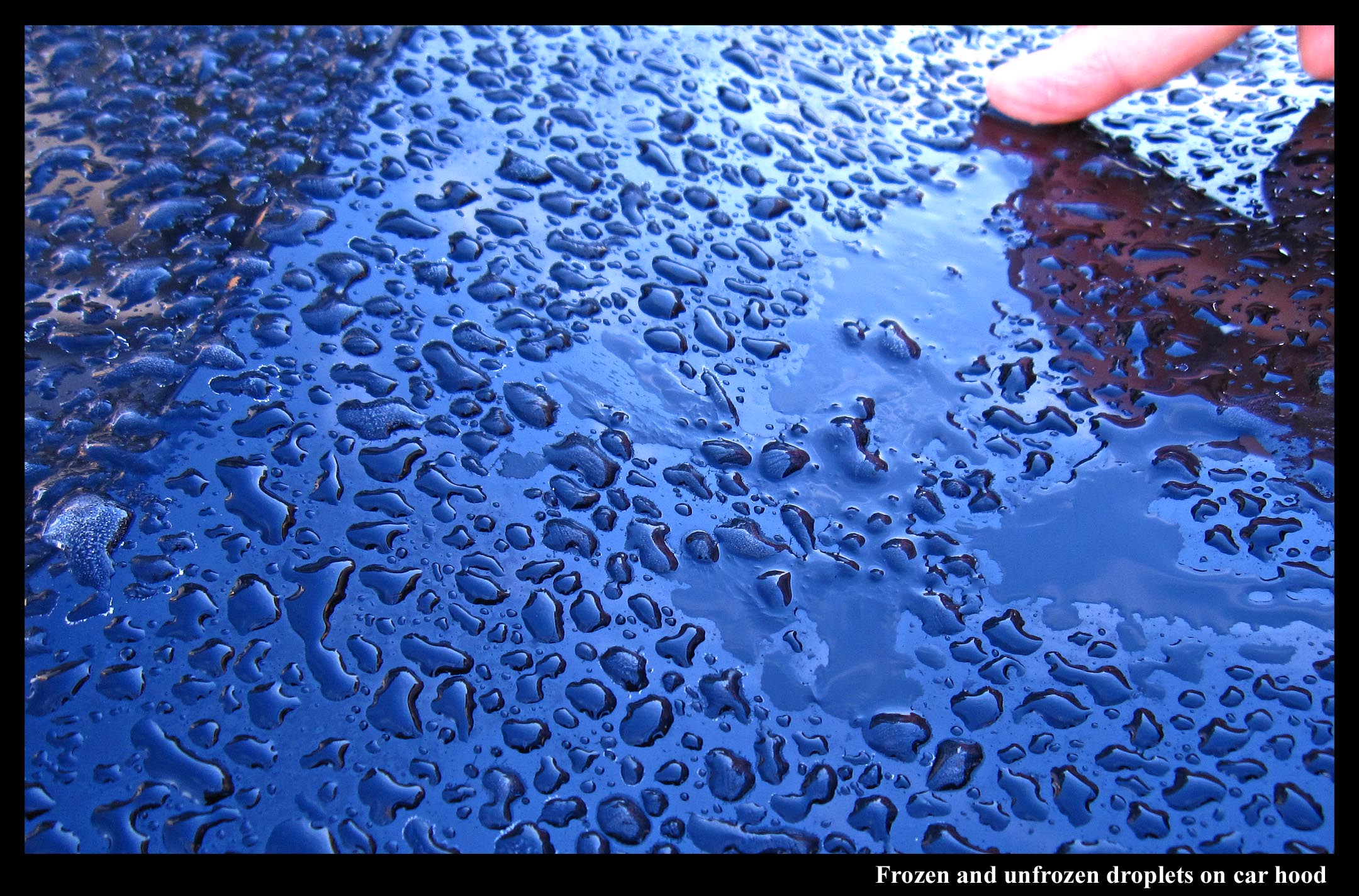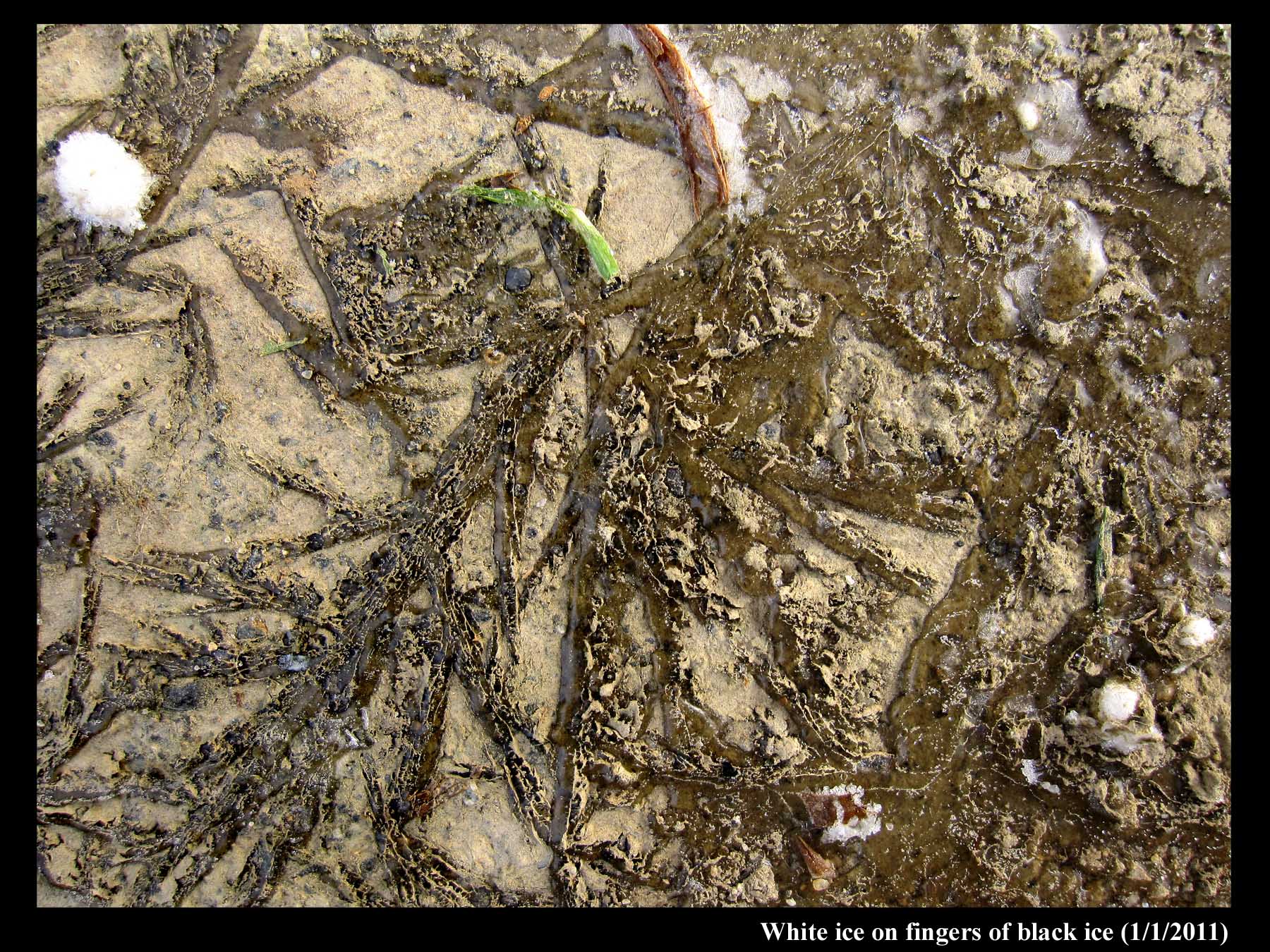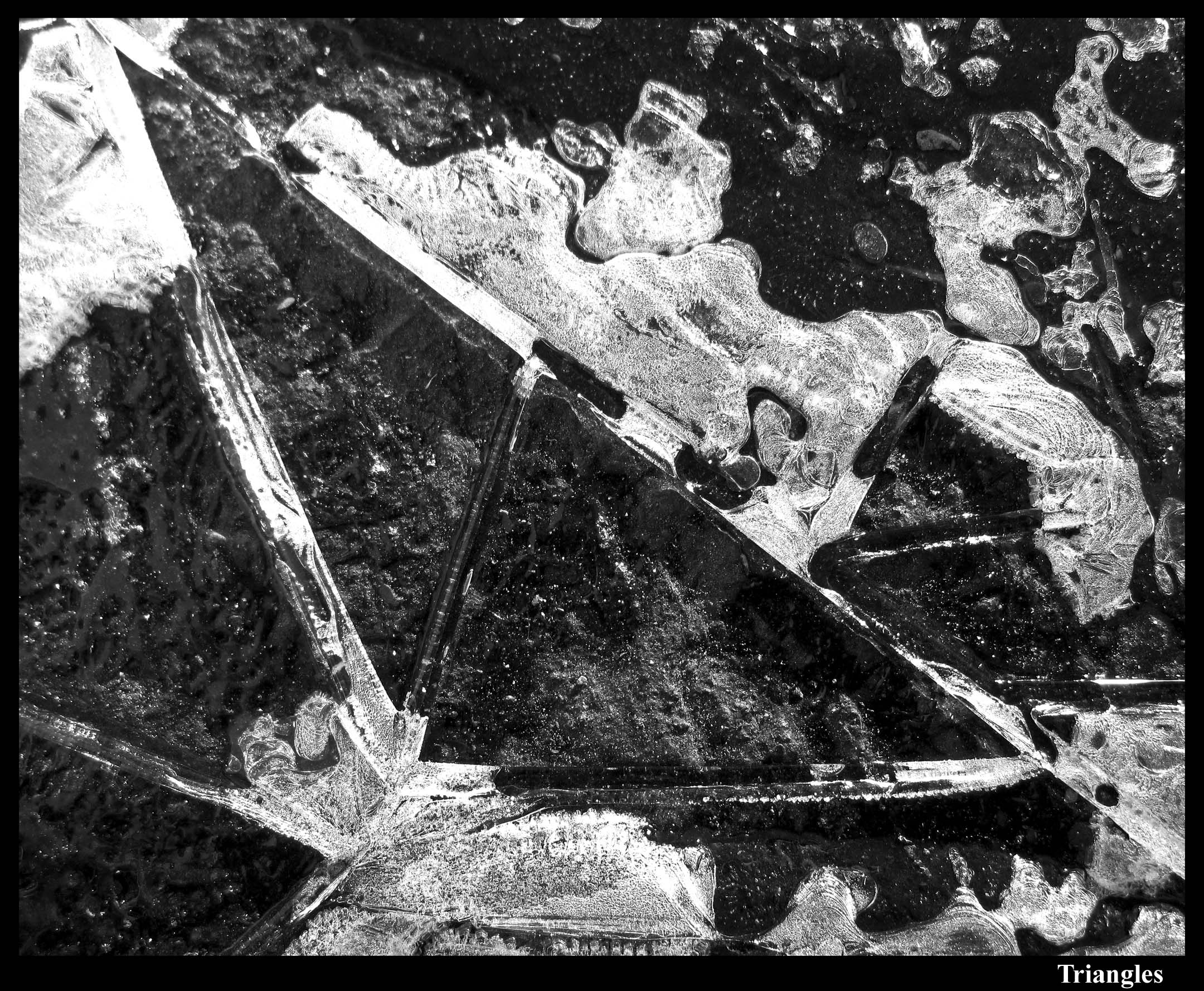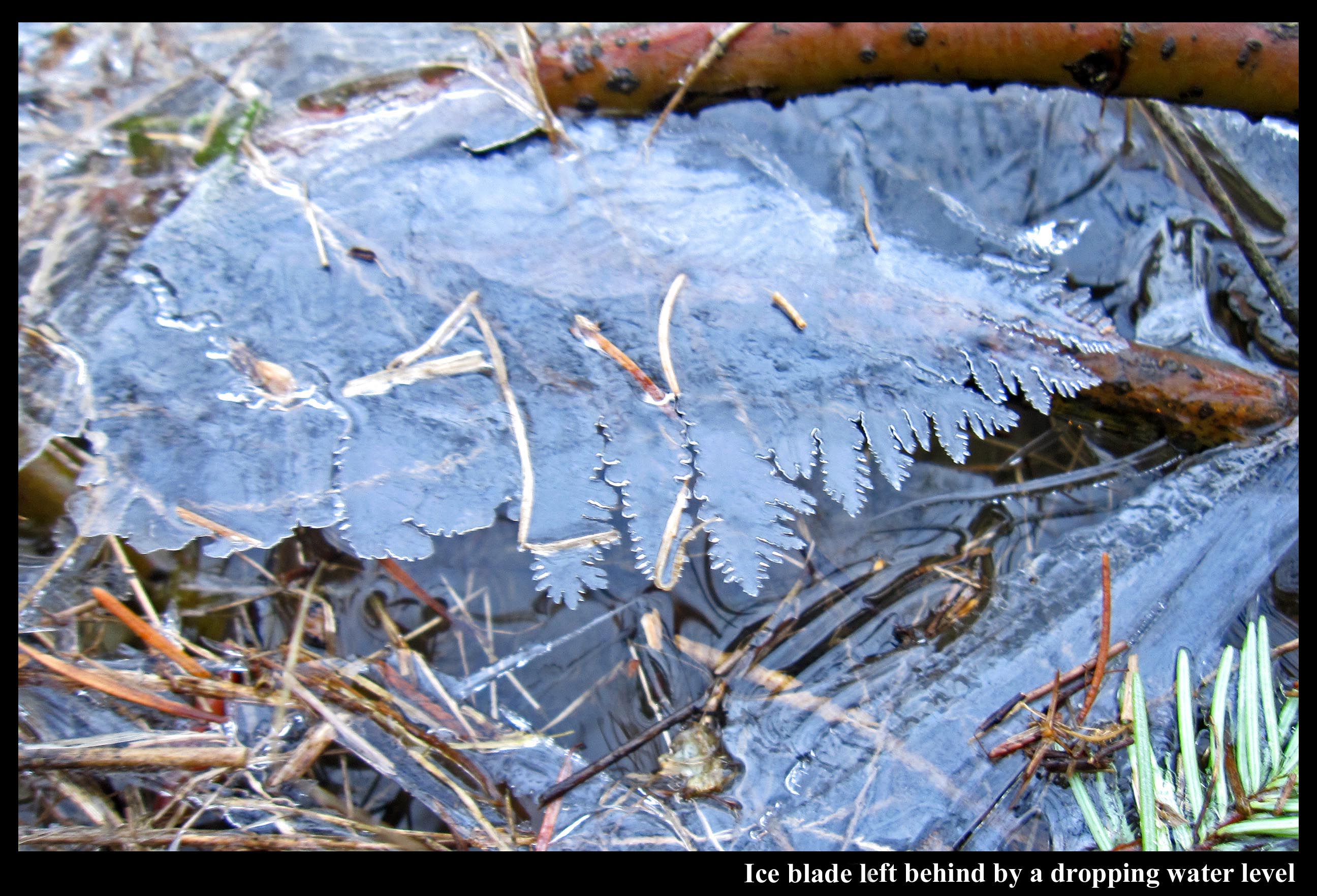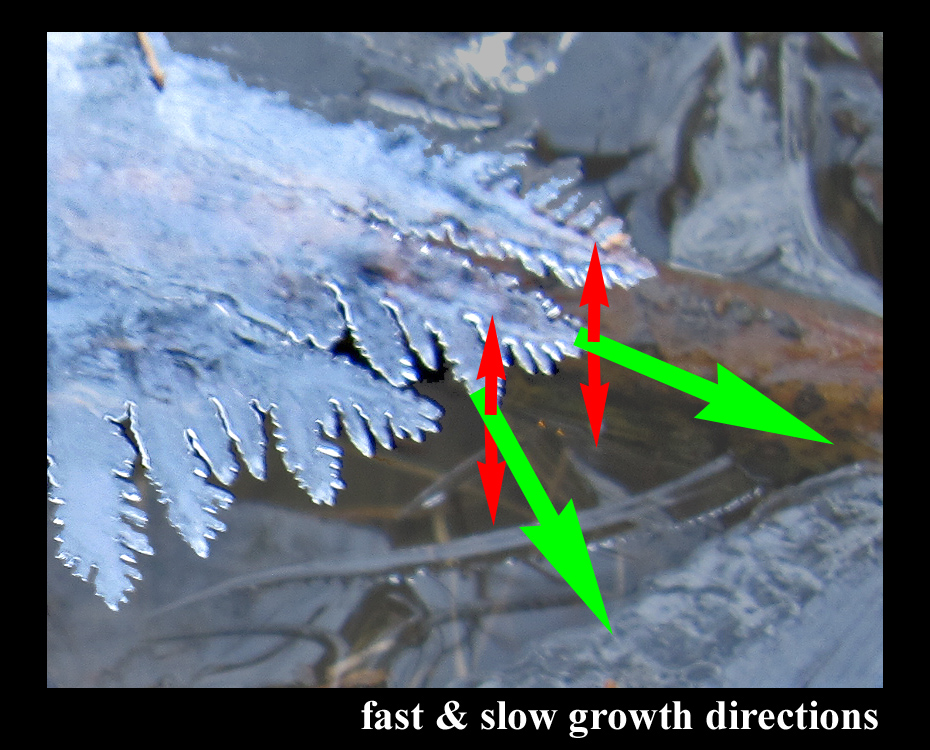| « The Crunchy Puddle Puzzle | Finally got it! » |
Black Ice
Black ice can form on sidewalks.
It can form in parking lots.
And it can form on small pieces of plastic.
To be “black”, the ice only has to be noticeably darker than its surroundings. And it can be darker if the ice attaches snugly to the underlying surface and is smooth on top. That is, the ice is black when it flows onto the surface like liquid water. The darkening effect is strongest when the underlying surface is rough because the water or ice fills the cavities that otherwise make the roughened surface a little whiter. As the image below shows, ice and liquid water darken a smooth surface as well, but the effect is weaker than that for the first three photos where the surface was rougher.
Black ice forms by water flowing onto the surface and then freezing. Black ice is black for the same reason that wet surfaces appear dark. In fact, black ice’s resemblance to liquid water is likely one reason it is so dangerous – though we’d hesitate about stepping onto smooth ice, we think little of stepping onto a slightly wet patch.
And yet, as the first three photos show, black ice can have patterns that you’d never see with liquid water. For the sidewalk, the ice has formed little fingers. Here’s a blow-up of a nearby region of the sidewalk, a region with a coating of light sand.
How did the liquid water get removed from between the fingers of ice? Did most of it evaporate or did most of it flow towards the growing ice? Or did it seep into the concrete?
I pose the same question for the ice on a parking lot in the second image from the top. In this case, the largely water-free regions include some nearly perfect triangles.
The triangles formed because the ice grew through the original patch of water as it does through a deeper puddle; blades of ice cut through the water like a knife through margarine. See the image below where the water drained from a pond as the blade was growing. (Here the blade is turned horizontal, like a knife spreading margarine on toast; sometimes the blade is horizontal and sometimes it is more vertical.)
The ice grows like a blade because one direction in the crystal grows much, much more slowly than the other direction (unless the water is several degrees or more below freezing). Meanwhile all crystal directions perpendicular to this grow very fast (fastest towards the coldest water), as marked as green arrows in the figure below.
What we see in the lines that border the triangles are the edge-on view of near-vertical blades; they can’t grow up above the water surface (at least by much), so we just see them as lines cutting across the surface.
So, how did the water get removed from between the ice fingers or in the middle of the triangles? Probably some evaporated, but I doubt that evaporation accounts for much of the water loss. Why? Because if a lot of water evaporated, then I’d expect white hoarfrost to form on top of the ice-lines where some vapor deposited. We do have some white hoarfrost near the triangles, but that hoar is underneath the ice, where the ice blades had spread out horizontally along the top. Another idea: Maybe some water absorbed into the pavement. However, the puddle had been sitting there for over a day without draining, so it seems unlikely that the pavement would suddenly start absorbing more water just at the time the puddle started freezing. The strangest explanation is that water flowed along the ground surface to the ice and then solidified either on top of the ice or below the ice. Actually, this explanation is not so far-fetched. For instance, we know an upward flow of water happens in the case of freezing ground, so maybe the water can also flow horizontal to the parts of the thin puddle with ice. I’d like to test this out with an experiment.
- Jon
4 comments
I was searching for info on why I am seeing unique (to me) ice formations on puddles and ponds in Mendocino County, N. California. I didn’t absorb the above…it’s late and I read it fast. I’m also old and my brain is toast so I will have to read it more slowly. The formations I have seen are triangles that are frozen on the surface (horizontal) of the water; around edges of triangles are “frames” of ice 1/4 to 1/2 inch wide which appear to rise a bit above the surface of the triangles. I asked my husband, a science guy, who said he thot it had to do with wind as the ice is forming. There hasn’t been any wind!

Ah, I understand the difficulty! It is hard to picture these three-dimensional patterns and shapes, and even harder to see how they form. Some good drawings would really help.
I think you are referring to the triangular features that appear in the first puddle photo of the next blog posting “The Crunch Puddle Puzzle". But it sounds like the features you saw did not have completely drained water, and as a result, the bars of ice that formed the perimeter of the triangles were a little higher than the interior region of the triangle. Perhaps they were also a little higher than the region exterior to the bars.
Once, I saw 1/2″ deep holes in the top surface of an outdoor bathtub. I still find that puzzling. But I will try to post a few explanatory drawings in the next few days.
Jon
just posted some photos of black ice on my flickr site. so far, you are the only site i have found that has similar shots of this phenomenon!
go to my site and check out the patterns that showed up on our flat rocks at our home in ct. i have never seen this before in my life! so far i think that people who see this think it is a hoax or something!
http://www.flickr.com/photos/schaut/
thanks, dennis

Wow, Dennis, those are fantastic patterns and great photos – thanks for the link!
Many people seem to think that the curvy ice patterns only form on glass. But it only requires a thin film of water. This is why I call it “film frost". In addition to the cases of concrete and plastic shown above, I’ve also seen it on wood. I don’t recall ever seeing it on rock, or if I have, never as startling as the formations you photographed.
Jon
